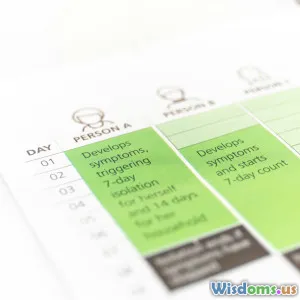
How to Optimize Your Blog Posts
7 min read Unlock powerful tips and strategies to optimize your blog posts and boost your content’s performance. (0 Reviews)
How to Optimize Your Blog Posts: A Comprehensive Guide
Optimizing blog posts is essential in today’s crowded digital landscape. Regardless of how insightful or well-written your content is, it needs to be discoverable and reader-friendly to make an impact. In this guide, we’ll delve into actionable strategies to optimize your blog posts for search engines, user engagement, and social sharing—helping you build an audience and grow your online presence.
Understanding the Importance of Blog Post Optimization
Blog post optimization is more than keyword stuffing or formatting. It’s about crafting your articles to align with your audience’s search intent while delivering authentic value. Optimized posts increase organic traffic, encourage return visits, and can significantly elevate your authority in your niche.
Why Optimization Matters
Research from HubSpot shows that 75% of users never scroll past the first page of search results. If your blog posts are not optimized for SEO, they risk invisibility.
Furthermore, an optimized post enhances user experience (UX). Factors such as readability, fast load times, and mobile usability are critical metrics often considered by search engines when ranking pages.
Key Elements to Optimize in Your Blog Posts
1. Craft Compelling and SEO-Friendly Titles
Your title is the first interaction users will have with your content. Headlines that are clear, descriptive, and emotion-evoking perform better.
- Use primary keywords naturally within the first 60 characters.
- Include power words like "ultimate," "proven," or "essential" to boost clickability.
- Avoid clickbait that disappoints; Google’s algorithm detects poor user satisfaction, which affects rankings.
Example: Compare "Blog Tips" vs. "10 Proven Tips to Optimize Your Blog Posts for Massive Traffic" — the latter is more descriptive and keyword-rich.
2. Focus on Keyword Research and Placement
Understanding what your audience searches for helps tailor content that meets their needs. Tools like Google Keyword Planner, Ahrefs, or SEMrush provide insights into keyword difficulty, volume, and related queries.
- Use your primary keyword naturally in the title, introductory paragraph, subheadings, and conclusion.
- Incorporate latent semantic indexing (LSI) keywords to enhance topical relevance.
According to Moz, keyword-rich content is 40% more likely to rank higher on search results.
3. Write Engaging, Informative Content
Length matters: HubSpot’s analysis found that the average highest-ranking blog post contains about 2,100-2,400 words. However, depth and quality trump length:
- Break down complex concepts into digestible segments.
- Use storytelling, anecdotes, or case studies to add personality and credibility.
- Provide actionable insights rather than vague theory.
Real-World Insight: Buffer’s blog posts include detailed examples and statistics, which contribute to their evergreen performance.
4. Structure Your Posts for Readability
Readability plays an essential role in user retention:
- Use short paragraphs (2-4 sentences).
- Incorporate bullet points and numbered lists for clarity.
- Use descriptive subheadings (H2, H3 tags).
- Highlight key takeaways with bold or italics.
A Nielsen Norman Group study notes that users scan content; an organized post increases the probability they’ll engage deeply.
5. Optimize Images and Multimedia
Visuals enhance comprehension and can boost SEO:
- Use high-quality images relevant to the content.
- Compress images for fast loading (using tools like TinyPNG).
- Add descriptive alt text with keywords to improve accessibility.
- Embed infographics or videos to illustrate complex ideas.
6. Implement Internal and External Links
- Internal links guide readers to related content, increasing time-on-site and reducing bounce rates.
- External links to credible sources add authority and trustworthiness.
Example: Linking to authoritative sites like Wikipedia or industry leaders reinforces your content’s validity.
7. Optimize Meta Descriptions
Though meta descriptions don’t directly affect rankings, they influence click-through rates (CTR):
- Keep them under 160 characters.
- Incorporate primary keywords.
- Provide a compelling reason to click without duplicating the title verbatim.
Example from Neil Patel: "Boost your blog traffic with 10 proven optimization techniques you can implement today."
8. Improve Site Speed and Mobile Experience
A slow-loading page can deter visitors and negatively impact rankings:
- Use Google PageSpeed Insights to audit and improve load times.
- Employ responsive design to ensure mobile friendliness.
- Avoid excessive scripts and plugins that slow down the page load.
According to Google, 53% of mobile users abandon a site if it takes longer than 3 seconds to load.
9. Encourage Engagement and Sharing
- Add social sharing buttons strategically.
- Craft content that evokes emotion or debate to encourage comments.
- Use clear calls-to-action (CTAs) to guide readers — such as "Subscribe," "Comment below," or "Share this post."
Interactive content and engagement signals can indirectly boost your SEO.
10. Regularly Update Your Posts
Google prefers fresh, up-to-date content:
- Review your posts quarterly to update statistics, links, and examples.
- Revise introductions to reflect changes in trends or technology.
HubSpot’s case study showed that updating an old post lifted its traffic by 106% within months.
Conclusion
Optimizing your blog posts is a strategic process that blends SEO best practices with user-centric writing. By crafting compelling titles, researching keywords intelligently, and enhancing readability and multimedia use, your content can achieve higher rankings and deeper engagement.
Remember, optimization isn’t a one-time task but an ongoing commitment. Regular content audits, performance analysis, and adapting to evolving algorithms will keep your blog relevant and thriving in an ever-competitive digital environment.
Implement the strategies outlined here to transform your blog posts into powerful tools for traffic growth, audience trust, and long-term success.
Rate the Post
User Reviews
Popular Posts





















